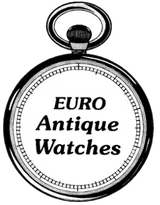
History of Pocket Watches
Share
Pocket watches have an intriguing history that takes us all the way back to the late Renaissance period. Imagine Europe in the early 1500s, and you have Peter Henlein, a German locksmith and watchmaker, crafting what we now call the first pocket watches. These early models, often referred to as "Nuremberg Eggs" due to their shape, were bulky and worn around the neck because pockets hadn't become a part of men’s fashion yet.
During the 17th century, pocket watches became more compact and reliable due to advances in mechanical engineering. The introduction of waistcoats provided the perfect spot for these timepieces, leading to their widespread adoption among the European elite. They quickly became a status symbol, with many pocket watches crafted from precious metals and featuring intricate engravings and enamelwork.
The 18th and 19th centuries marked the golden age for pocket watches, with significant improvements in accuracy, thanks to the balance spring. Industrialization allowed for mass production, making these watches more affordable and popular among the middle class. The railroad industry, with its need for precise timekeeping, even led to the establishment of specific standards for "railroad grade" watches in the U.S., ensuring reliable train schedules.
Pocket watches also became canvases for artistic expression, showcasing intricate miniatures and painted scenes on their cases and dials. Some even housed complex movements with complications like moon phases and perpetual calendars, reflecting both the craftsmanship and the personal tastes of their owners.
However, with the onset of World War I, the practicality of wristwatches for soldiers led to a shift in trends, and the use of pocket watches began to decline. Despite this, they remain cherished heirlooms and collector’s items today, appreciated for their historical significance and aesthetic beauty.
Intriguingly, pocket watches have left a significant cultural mark, often appearing in literature and film as symbols of time, history, and legacy. They might not be everyday essentials anymore, but their allure endures, whether as a nostalgic fashion accessory or a treasured piece of history.
